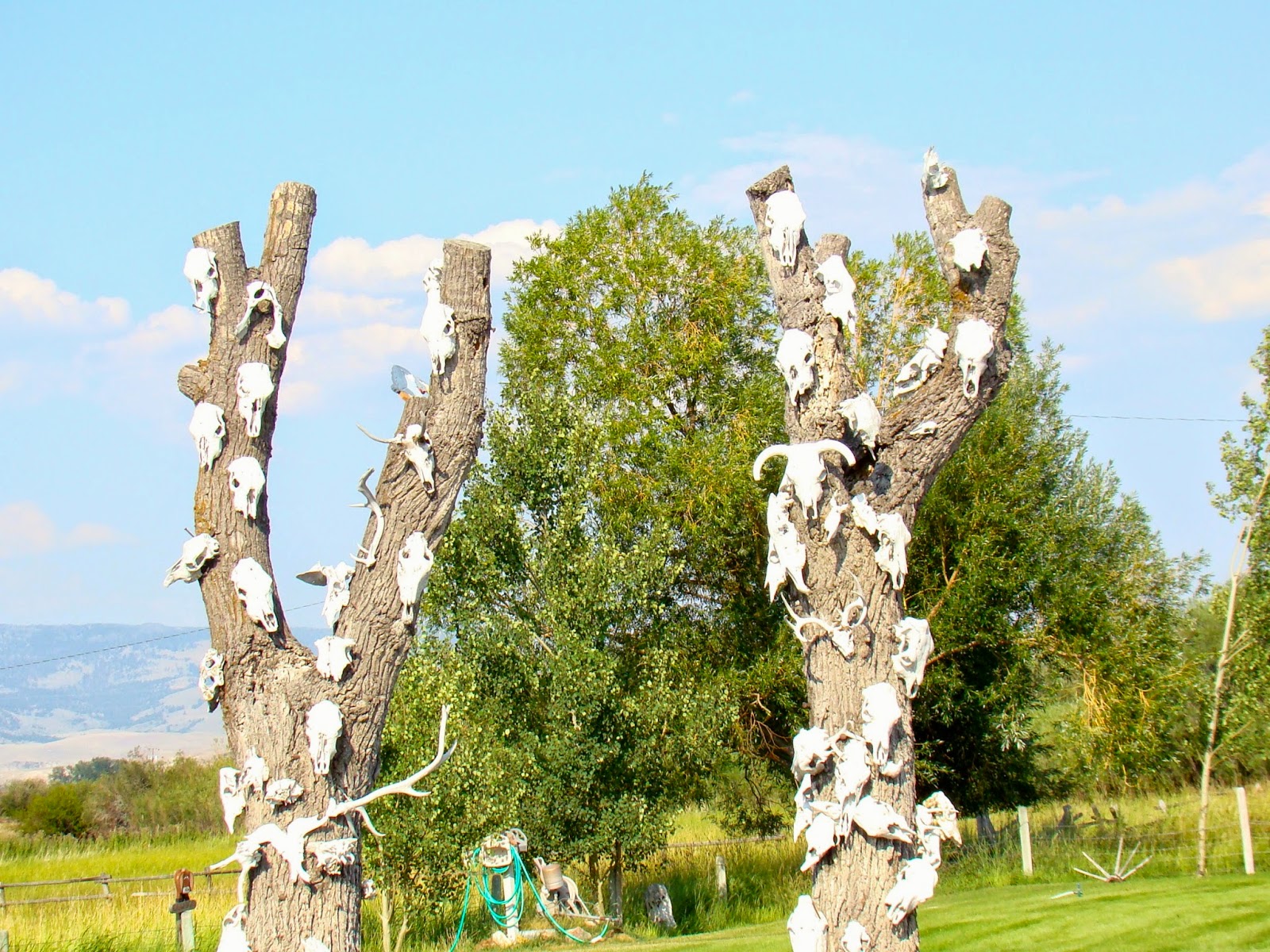We took the trails leading to several points in the battle. From this viewpoint we could look down on the entire valley.
The soldiers attacked from the forested hillside, here showing the bushes and trees growing along a winding creek.
We were tired from our hike on the hillside, but we absolutely had to take the trail leading out to the Indian encampment on the valley floor. Imagine our shock and surprise when this majestic moose crossed our path right in front of us. I barely got the camera turned on in time! We sneaked around the bush to see where he'd gone and found him looking at us. I snapped another photo before he gracefully leaped away into the bushes. I remembered the sign at the beginning of the trail warning us to stay away from any wild animals we might encounter! We had gotten a little closer than we should have, but it was the moose's doing, not ours!
These teepee poles were erected in recent years by Native Americans honoring their dead. The entire valley is preserved as a burial ground, undisturbed and treated with the respect due to these tragically wronged peoples. (Click to enlarge.)
We could almost hear the wails and the cries of the women, children and elders who were attacked without warning. Thunder and lightning surrounded us, adding to the spirit memories
of the long ago Nez Perce travelers. Some of the most heart-rending words I've ever read were spoken by Chief Joseph as part of his tribe escaped into Canada while he stayed behind caring for the weak and sick ones.
"I am tired of fighting. Our chiefs are killed...It is cold and we have no blankets. The little children are freezing to death...My heart is sick and sad. From where the sun now stands I will fight no more forever."













